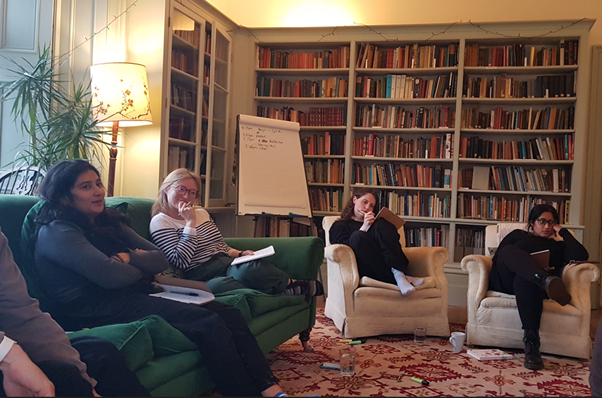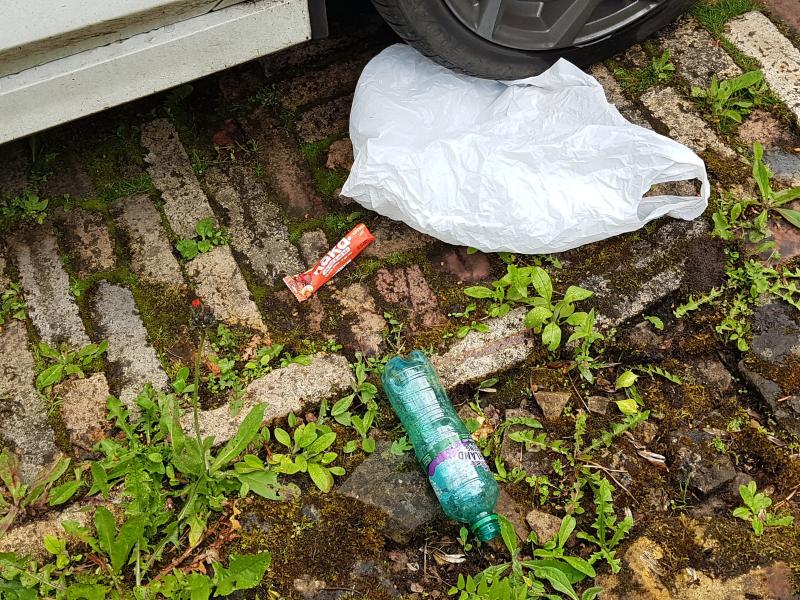Sadaf Rasheed04 Jun 2024
A few weeks ago, the Friends of the Earth AI and Community Action Lab that I've been a part of ended. The lab spanned a few months and became a space for a group of us to explore our ideas and delve into the impact that AI might have in our communities.
My challenge
When the lab started, I had a clear goal of what I wanted to achieve and where I thought I could use AI to help.
From a young age, I’ve been very conscious about litter – it’s everywhere. And every year, there’s more and more. It blights our communities, damages our environment and affects wildlife. And even dedicated litter pickers can get overwhelmed. I was reminded of this when I went on holiday, having seen people’s social media pictures of lovely places and pristine beaches. No one showed the litter that is everywhere. Litter isn’t aesthetic enough for our Instagram feeds but forgotten enough to not pick up.
For almost the last decade, I've been working with socially aligned organisations doing a mix of marketing, research, UX and behavioural design. It’s felt like these organisations have loads of information and data, but it’s incomplete and not substantial enough to demonstrate impact effectively. Hundreds of organisations in the UK are stockpiling data but siloed from one another.
I wondered if AI could be used to capture data from multiple surveys, photos and images sitting in these files, (including data on litter dumping and other environmental harms) and demonstrate the positive impact of small-scale community action..
Did I find a way to bring these datasets together? Nope. But the journey was interesting.
Failing fast: what do you do when your bubble bursts?
My initial idea didn’t fail because it’s not possible or because AI can’t support the process. It failed because it was very ambitious and it wasn't something I could do without additional time, money and partners. One key thing that became more certain for me through this process is the fact that all tools and tech, AI in particular, are just a way to catalyze the work we already do.
Despite the evolution of my project, it was nice being in an environment that encouraged me to explore alternatives. In the exploratory phase of the process, I spoke to people across the country, from academics to community organisers and charity leaders, to learn more about their respective insights on the environment and the small actions that can lead to positive social change.
The evolution of my idea - a testing time
Partway through the project, we held a swarm where expert critical friends were invited to respond to our initial ideas with feedback and advice.
The idea I brought to the swarm had evolved into one of a gamified platform to educate, inspire and mobilise people to litter pick. But, as we all know, no idea is worth anything unless relevant to your target audience - so then we entered the test phase.
In the interest of time and speed, I put together a quick behavioural survey to understand how people litter pick and if my idea was feasible. I shared the survey online via Facebook groups for litter pickers and quickly realised that my idea, however much I liked it, had some fatal flaws.
The survey pointed out the logistical problems with my idea e.g. people who litter pick wear gloves and often don’t have their mobile phones to hand. An app would be redundant in this situation. If I had more time, I would have run a rapid ethnography, but as I didn’t a survey was the best route.
I, like many people before me, had to kill my darling for a second time.
Opportunities and next steps
The Lab allowed for connection and reflection through the fostering of a sense of community. I had a great time working with (and frantically messaging) my buddy, and fellow participant, Fenella Corrin who was on a similar journey. So, when my feedback wasn’t a bunch of people singing my praises, I reflected with the team and our tech mentor for a new strategy and idea. The space once again helped me iterate and create a version of my idea that fostered community mobilisation.
The next steps will be a version of my prototype that builds on gamification and education to benefit the environment. This time I’m going to focus on capturing a moment and encouraging people to look for litter.
How many of us look up when we leave the house? Like the gorilla basketball experiment, I want to make litter the key focus of people’s interactions outdoors for a set period of time. By seeing the problem, and the steps we can all take to address it, we can be persuaded to change behaviour. I’m seeking tech partnership, and community to roll out an iteration of the prototype as well as my first idea.
Final reflections: the role of AI in the environment
AI is everywhere. The more ethically-minded are concerned that big tech and large companies are charging forward with their version of technology and AI, but if we spend too long speculating we’ll be left behind. Our discussions in the Lab solidified the need to strike a balance between understanding the environmental impacts of AI and the ethical implications and inequalities in which tech is often rooted - while also acknowledging its benefits.
We're not on the same playing field. But we have to consume technology or content, as it's already been developed. So it's been interesting to be part of the journey where we can be early adopters and encourage our communities to go along with that process. This is particularly true of AI, which although widely discussed and debated, is not necessarily made accessible or palatable to community groups or organisations.
Big problems need radical solutions. My hope is that AI can be used to benefit the environment and become an effective tool to combine and strengthen the data we have on environmental problems to give us a clearer picture of our impact.
The asymmetrical nature of the power of Big Tech is problematic. But through this process, the Lab has helped to equalise that playing field, and empowered us to do that in our communities through our work.
If you would like to follow any of this up with me, I'm on LinkedIn.




